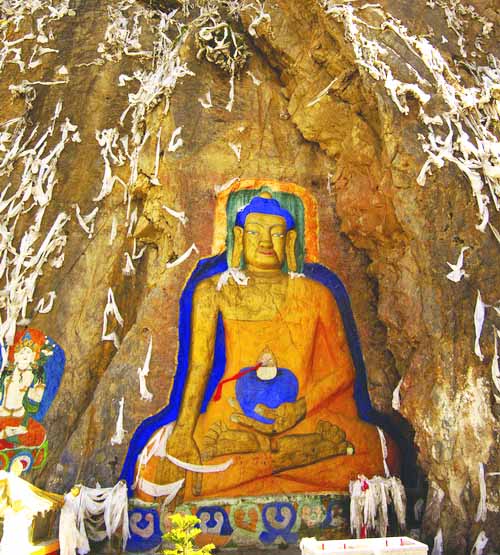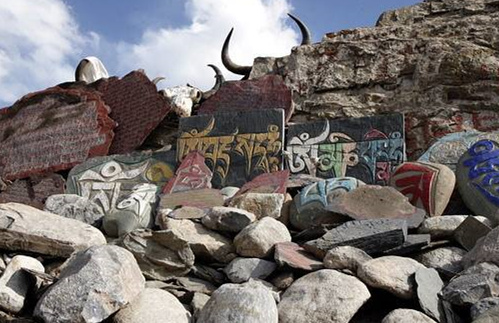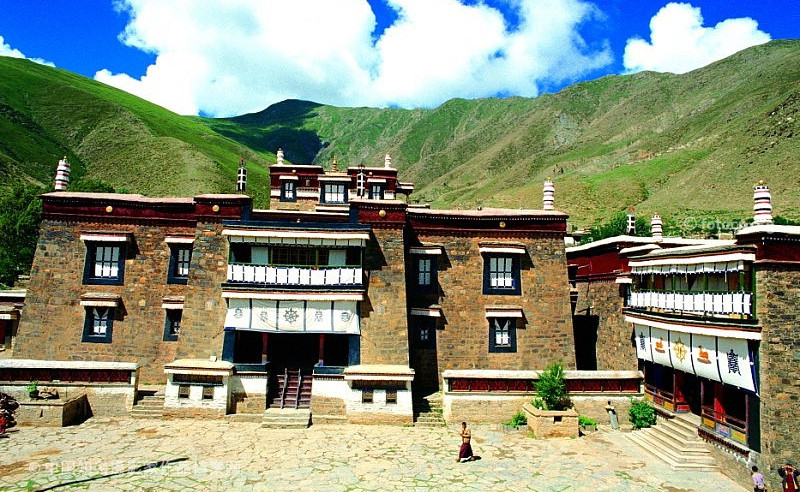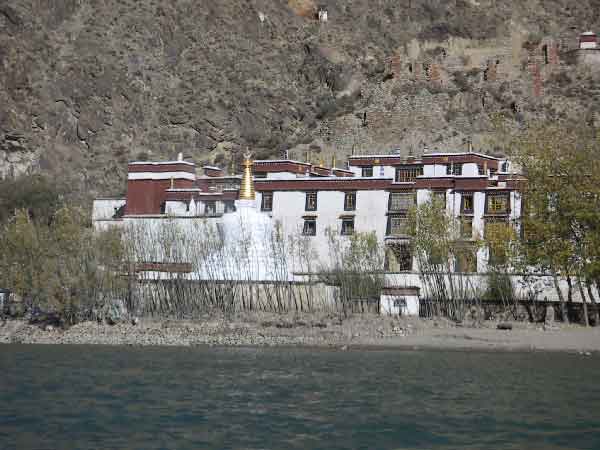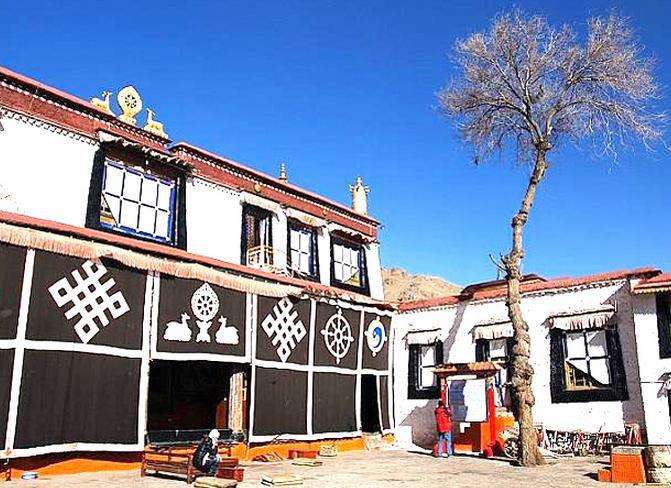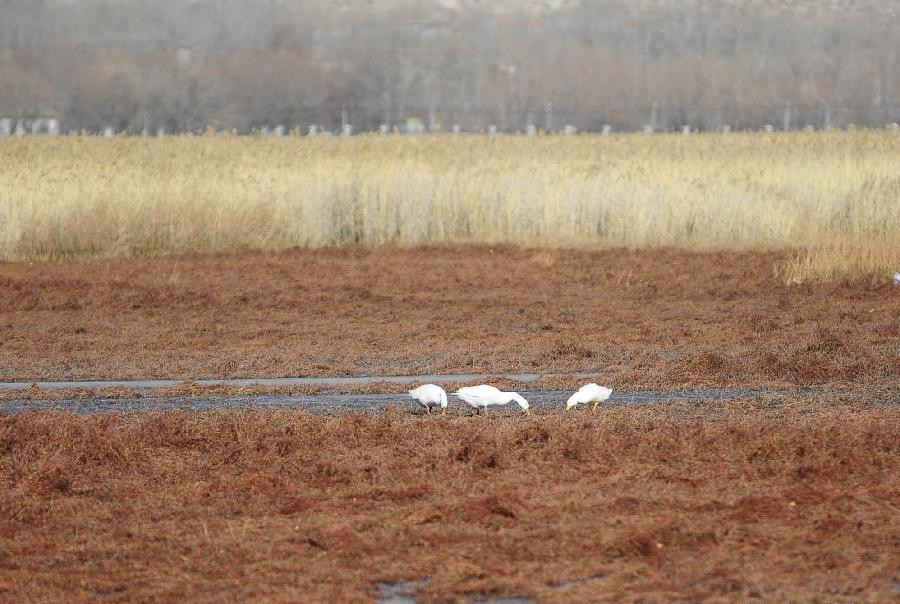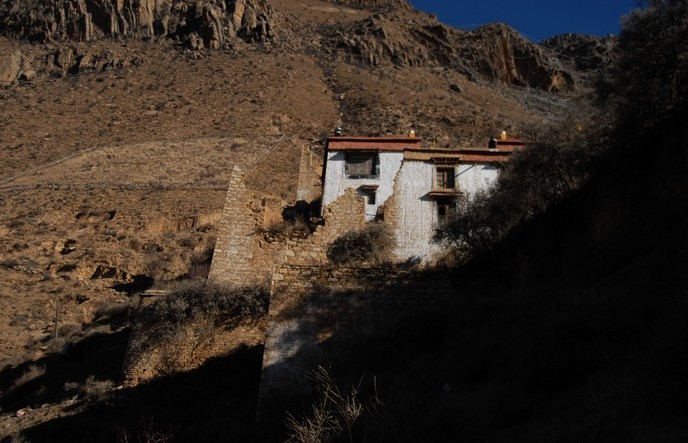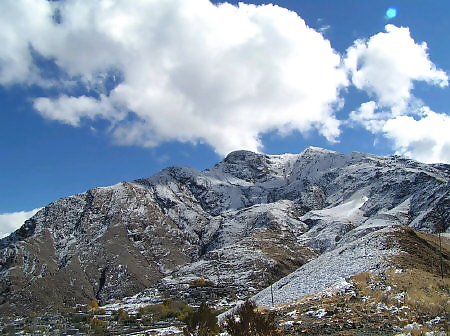Zhayeba Monastery
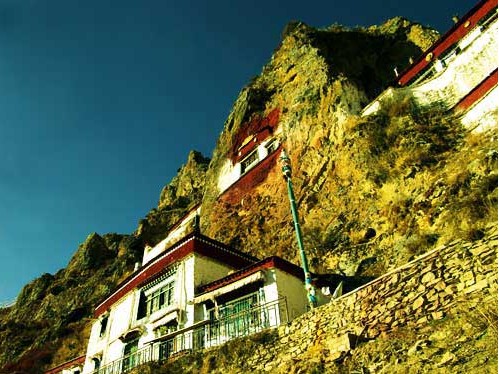
Zhayeba Monastery is located in the Dazi County, Lhasa City, among the Lariningbu Mountain, 20 kilometers northeast of Lhasa. It is the second highest monastery of Tibet and one of the four places for seclusion and cultivating. Zhayeba Monastery plays an important role in the history of Tibet with unique architectural styles. It is said that there are altogether 108 caves in the Zhayeba Monastery. The original looks about 1,500 years ago of Zhayeba Monastery are still kept in good condition, thus Zhayeba Monastery is no doubt a must for you during your Tibet tour.
Zhayeba Monastery was inlayed in the cliff. It was originally built in the middle of 7th century by Songtsen Gampo for the Princess Mengsa Chijiang. In the 8th century, Trisong Detsen advocated Buddhism. He invited master Padmasambhava to Tibet from India. When master Padmasambhava was preaching the Buddhism in Zhayeba Monastery, he built the 108 cultivating-caves for 108 achievers. Since then, Zhayeba Monastery became the Mandala of Tantra in Tubo Kingdom period. In the 11th century, an Indian revered monk-Attisha once wrote books and preached here. There is his former residence and self-cultivating cave remained.
With precious attractions, Zhayeba Monastery is a must for you during your Tibet tour. There are more than a dozen caves in the Zhayeba Monastery, among which the Songtsen Gampo's self-cultivating Cave was built the earliest on the halfway of the cliff. Originally, there were some Buddha shrines, ancient murals and the statue of Songtsen Gampo. And now the statues have been destroyed. Temples were built around the caves, which were successively repaired and rebuilt, thus forming famous large-scaled Zhayeba Monastery.
The Moon Cave in which master Padmasambhava once cultivated himself still remains today. Not far away from the cave is bell-room. A coppery bell is hung in the room. A bell-inscription was engraved on the bell. From the style of calligraphy of these words, the experts deduced that it is a cultural relic in Tubo Kingdom period. Zushi (the founder of a school of learning) Cave is the cave in which the Indian monk Attisha once lived.


